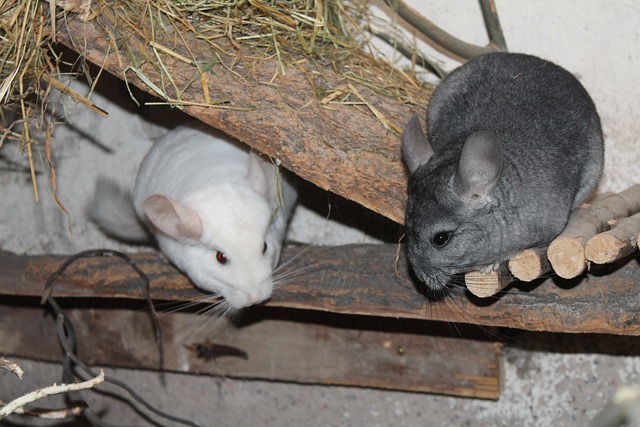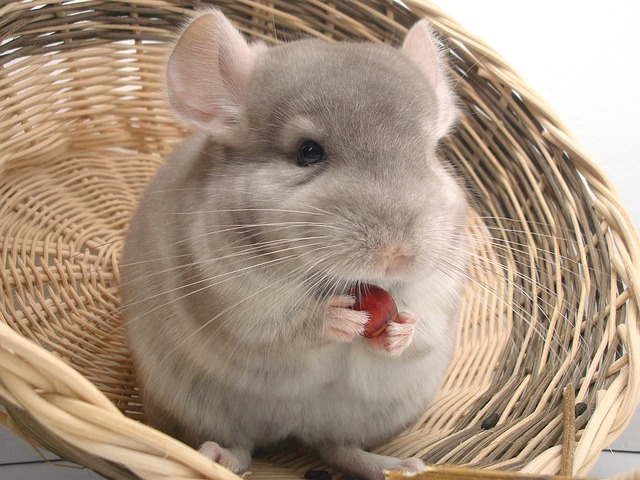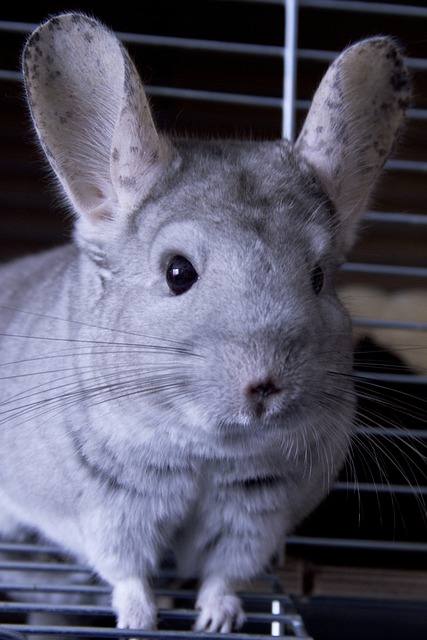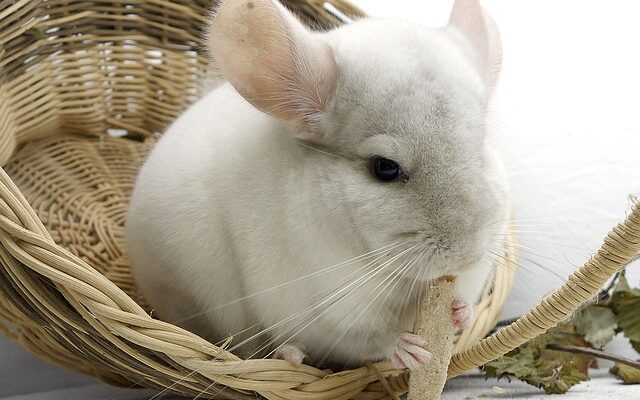Introduction:
White chinchillas, with their soft fur and endearing features, captivate the hearts of animal lovers worldwide. These small rodents, native to the Andes Mountains in South America, have become popular pets and subjects of fascination due to their unique characteristics and charming personalities. In this comprehensive guide, we delve into the world of white chinchillas, exploring their origins, behavior, care requirements, and more.
The Origin and Evolution of White Chinchillas:
- White chinchillas belong to the Chinchillidae family and are closely related to their wild counterparts, the long-tailed chinchillas.
- Initially native to the Andes Mountains of South America, chinchillas faced threats due to habitat destruction and hunting for their fur, leading to their classification as endangered species.
- Through conservation efforts and breeding programs, white chinchillas have become more accessible as pets, offering a glimpse into their natural history and evolution.
Understanding the Characteristics of White Chinchillas:
- White chinchillas are known for their soft, dense fur, which comes in various colors, including white, beige, and mosaic patterns.
- These small rodents possess large, round eyes and large ears, which contribute to their adorable appearance.
- White chinchillas are crepuscular animals, meaning they are most active during dawn and dusk, exhibiting playful and curious behavior.
White Chinchilla Care and Housing:
- Providing a suitable habitat is essential for the health and well-being of white chinchillas. A spacious cage with multiple levels, platforms, and hiding spots allows for exploration and exercise.
- White chinchillas thrive in a temperate environment with low humidity and adequate ventilation. It’s crucial to monitor temperature and humidity levels to prevent heat stress or respiratory problems.
- A balanced diet consisting of high-quality hay, pellets, fresh vegetables, and occasional treats ensures proper nutrition for white chinchillas. Access to clean, fresh water should be available at all times.
Bonding and Socialization:
- White chinchillas are social animals that enjoy companionship. Pairing them with a compatible cage mate or providing regular interaction with their human caregivers helps prevent loneliness and boredom.
- Bonding with white chinchillas requires patience and consistency. Gentle handling and positive reinforcement build trust and strengthen the bond between the pet and the owner.
Health and Wellness:

- Regular veterinary check-ups are essential for monitoring the health of white chinchillas and detecting any potential issues early on.
- Common health concerns in white chinchillas include dental problems, gastrointestinal issues, and fur-related conditions. Providing proper dental care, a balanced diet, and a clean living environment can help prevent these problems.
Breeding and Reproduction:
- Breeding white chinchillas should be approached responsibly, considering factors such as genetics, health, and welfare.
- Female chinchillas, known as “sows,” have a gestation period of approximately 111 days, giving birth to litters of one to six kits.
- Proper care and attention during pregnancy and childbirth are crucial for ensuring the health and survival of both the mother and her offspring.
Conservation and Ethical Considerations:
- Despite their popularity as pets, white chinchillas still face threats in the wild due to habitat loss and illegal hunting.
- Supporting reputable breeders and adopting rescue organizations are ethical ways to acquire white chinchillas as pets, contributing to conservation efforts and promoting responsible pet ownership.
Conclusion:
White chinchillas enchant us with their soft fur, playful antics, and gentle demeanor. By understanding their origins, behavior, and care requirements, we can provide these charming rodents with the love and care they deserve. Whether as pets or subjects of admiration, white chinchillas continue to capture our hearts and inspire us to appreciate the wonders of the animal kingdom.
White chinchillas continue to captivate us with their beauty, intelligence, and playful nature. By providing them with proper care, enrichment, and understanding, we can forge meaningful connections with these remarkable creatures and enrich our lives with their presence. Whether as cherished pets or admired ambassadors of the animal kingdom, white chinchillas remind us of the joy and wonder found in the world of nature.
Enrichment and Entertainment:
- White chinchillas are intelligent creatures that thrive on mental stimulation and physical activity. Providing a variety of toys, tunnels, and climbing structures in their habitat encourages natural behaviors and prevents boredom.
- Chinchilla-safe items such as wooden chew toys and fleece hammocks offer enrichment while promoting dental health and comfort.
Grooming and Hygiene:

- White chinchillas are meticulous groomers, spending hours each day grooming their fur to maintain cleanliness and remove loose hairs.
- Dust baths, made from specialized chinchilla dust, are essential for white chinchillas to keep their fur clean and oil-free. These baths should be provided several times a week in a shallow container for optimal grooming.
Training and Behavioral Understanding:
- White chinchillas can be trained using positive reinforcement techniques, such as clicker training, to learn simple commands and behaviors.
- Understanding chinchilla body language, vocalizations, and behavior cues helps owners interpret their pet’s needs and emotions, fostering a deeper connection and mutual understanding.
Traveling with White Chinchillas:
- Traveling with them requires careful planning and consideration to ensure their safety and comfort.
- Portable travel cages equipped with food, water, and familiar bedding provide a secure environment for these during journeys. Adequate ventilation and temperature control are essential to prevent stress and overheating.
Legal Considerations and Regulations:

- Before acquiring a white chinchilla as a pet, it’s important to research and understand local laws and regulations regarding exotic pet ownership.
- Some regions may have restrictions or licensing requirements for keeping chinchillas as pets, and it’s essential to comply with these regulations to avoid legal issues and ensure the welfare of the animals.
Community and Resources:
- Joining online forums, social media groups, and local chinchilla clubs can provide valuable support, advice, and camaraderie for white chinchilla owners.
- Utilizing reputable resources such as veterinary professionals, breeders, and educational websites helps ensure that they receive the best possible care and support throughout their lives.
White Chinchillas in Popular Culture:
- They have made appearances in various forms of media, including books, films, and video games, where they are often depicted as adorable and lovable characters.
- Their popularity in popular culture reflects their widespread appeal and enduring charm as beloved pets and cultural icons. See more
FAQS:
As an extension, these colors also dominate the pet market. In particular, Standard Grey, Mosaic, Standard TOV, White, Sapphire, and Beige chinchillas fall under the category of most popular types.
Depending on a variety of conditions and where they come from, a chinchilla can range from about $75 and up for an adoption fee or they can cost as much as $400 or more from a breeder.
All chinchillas with the Tower Beige gene, whether heterozygous or homozygous or a hybrid such as tan, TOV beige, pink-white, etc… will have red eyes.
Not to be handled too much – chinchillas can learn to enjoy being with familiar people and being petted, but tend not to enjoy being handled and often struggle when picked up. They’re curious creatures, using their mouths to explore and chew items around them.
Chinchillas are clean, quiet, and attractive rodents that don’t smell. They can live for 10-20 years, and they’ve been bred and farmed for their soft, dense fur. They’re quite shy and are more appropriate as pets for adults and older children.
In Conclusion. Owning a chinchilla as a pet is a decent investment up front, just as it is for any pet, but the monthly costs can be less than $50 per month. The bond you’re about to share with your new furry friend will be like no other and it is worth every penny.
It’s all thanks to their perfectly round butts that resemble a giant dust ball or one of the Soot Sprites from the animated classic, Spirited Away. This particular breed is called violet chinchillas, and they get their name from the purple tinge of their fur
Being alone
Chinchillas are social animals and need the companionship of another chinchilla. If you do have just one you will need to spend lots of time keeping them entertained – grooming and spending time with them– but please do consider getting a second chinchilla for company.
Chinchillas are more likely to keep to themselves than guinea pigs are. Guinea pigs warm up to humans easily but a chinchilla that is handled from a young age can certainly become comfortable with their humans. Both pets love to have companions! If you’re considering a guinea pig or chinchilla, consider getting two.
Chinchillas’ digestive systems need hay and grass to function properly, and in the wild, they naturally eat grasses, leaves, and twigs. Here are our tips for making sure your pet chinchillas have the diet they need to stay happy and healthy.




